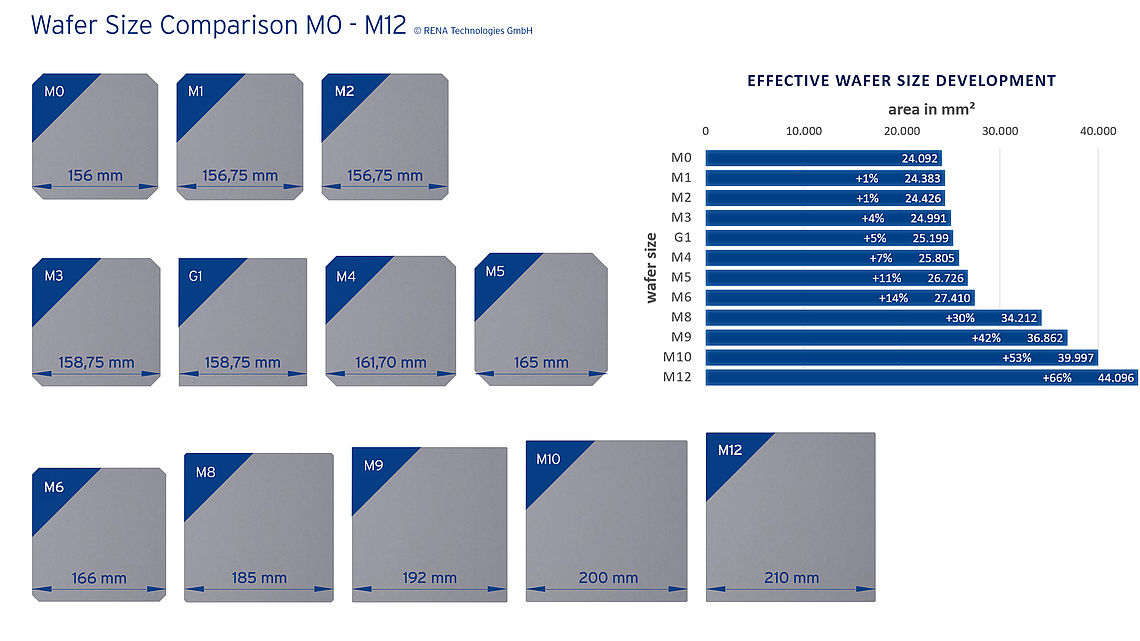Why wafer size matter.
Solar wafer sizes.
Zhonghuan semiconductor another wafer giant unveiled its latest wafer product the new m12 size in august 2019.
The common sizes of wafers today run from 150 millimeters to 450 millimeters.
The demand for wafers has exponentially increased over the past two decades due to the increase in the production and sale of pv systems smartphones and more.
In recent months countless new wafer sizes have appeared on the market.
In last weeks pv tech s techtalk series webinar with ja solar highlighted at length the various wafer sizes on the market and what these sizes meant to pv power plant projects as well as launch.
Although m2 wafers are easy to integrate even larger wafer sizes are beginning to be used to obtain 400 w plus modules.
The largest wafers made have a diameter of 450 mm but are not yet in general use.
In the early 2000s solar wafers were small around 125 mm 5 in in length.
In 1980 a 150 millimeter wafer might have sufficed for production needs but in 2017 the 450 millimeter wafer was introduced to meet increased demand for production.
Then came the m4 wafer 161 75 mm around 2016 and the last few years have seen increased interest in even larger wafers with m6 166 mm m10 182 mm.
Conspicuously absent from the.
Jinkosolar began producing modules with 158 75 mm side length in 2018 lg went even further with 161 75 mm in as early as 2017 whereas canadian solar pushed their multicrystalline technology with 166 75 mm side length cells.
Zhonghuan said a 60 cell pv module with this impressively enlarged wafer would easily boast module power output of more than 600 wp.
Electronics use wafer sizes from 100 450 mm diameter.
M1 m 2 m3 m4 m5 m6 m12 solar wafer and solar cell sizes m1 m2 m3 m4 m5 m6 and m12 are standard different wafer sizes used in the solar cell production process.
The size of wafers for photovoltaics is 100 200 mm square and the thickness is 100 500 μm.
It features a much bigger size of 210 mm in length and 295 mm on the diagonal.
After 2010 156mm x 156mm wafers increasingly became the popular choice lower cost per watt for p type monocrystalline and multicrystalline wafer sizes.
By the end of 2013 a number of producers jointly issued the standards for m2 156 75mm x 156 75mm p type mono wafers 205mm diameter silicon ingot and m2 156 75mm x 156 75mm p type mono.
In 2012 the m0 wafer 156 mm was introduced with the m2 wafer 156 75 mm eventually becoming the dominant size.
Seven solar manufacturers including tier 1 players have signed up to a joint initiative aiming to establish a new standard size for silicon wafers at 182mm x 182mm.
The boule is then sliced with a wafer saw a type of wire saw and polished to form wafers.

